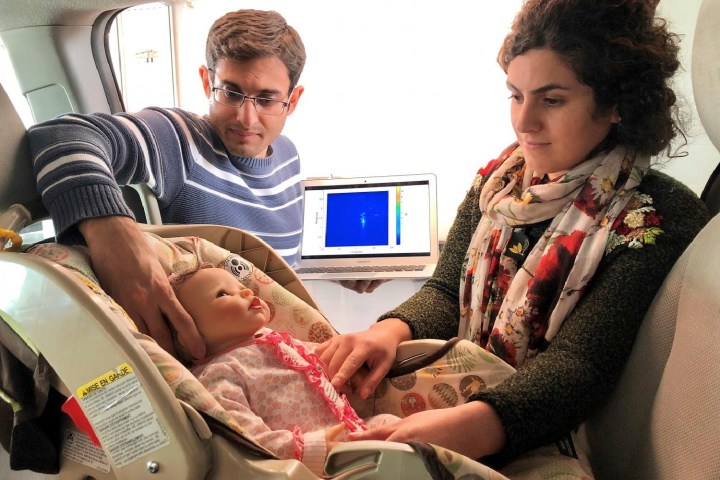
A new A.I.-powered device developed by researchers at the University of Waterloo can reportedly detect unattended children — and animals — left alone in vehicles with 100% accuracy. The experimental technology uses a combination of radar and cutting-edge machine learning to make its predictions — which could potentially save lives.
“We developed a life-detecting sensor using contactless monitoring of the changes on the body surface,” Hajar Abedi, a PhD candidate who worked on the project, told Digital Trends. “[We look at] the characteristic movement of a living body, such as respiration, with the employment of electromagnetic waves. We used a low-cost, low-power millimeter-wave frequency-modulated continuous-wave radar sensor for this purpose. We [also] developed an algorithm to identify occupied seats, [tracking] the number of occupants and their positions.”
According to the American Academy of Pediatrics, heatstroke is the leading cause of non-car crash vehicular deaths in children under the age of 15. Kids’ bodies heat up to 5 times faster than adult bodies, making them more susceptible to the dangers of being locked in a hot car on a warm day. Alarms such as this could alert surrounding people if a child somehow gets into a vehicle and becomes stuck or is purposely or accidentally left inside a car.
The device developed by the University of Waterloo researchers is tiny, measuring just three centimeters in diameter. This would enable it to be attached to a vehicle’s rear-view mirror or mounted on the ceiling of a car. Since it is a radar, rather than a camera, the device would also be less intrusive and protect the privacy of those individuals (or pooches) inside the vehicle.
The accompanying algorithm extracts cloud point information from the fitted radar, and then uses this to predict the number of occupants. The idea is that, in scenarios when kids or pets are locked in a car without a guardian, the system could stop vehicle doors from locking and sound an alarm. The system could also potentially be used to count the number of people in a car for toll roads or to indicate that they are allowed to use carpool lanes.
“Our planned next steps focus on A.I.-powered advanced radar signal processing to monitor driver and passenger vital signs along with indications of fatigue, distraction, impairment, illness, or other issues,” George Shaker, an assistant professor in Waterloo’s Department of Mechanical and Mechatronics Engineering and Department of Electrical and Computer Engineering, told Digital Trends. “[As for this specific sensor], we are working closely with an automotive original equipment manufacturer to make [it] available in the market before the end of 2020.”
Editors' Recommendations
- This AI algorithm could save lives in quake zones
- Security robots could be coming to a school near you
- How a big blue van from 1986 paved the way for self-driving cars
- The future of transportation: Self-driving cars? Try self-driving everything
- Why teaching robots to play hide-and-seek could be the key to next-gen A.I.


